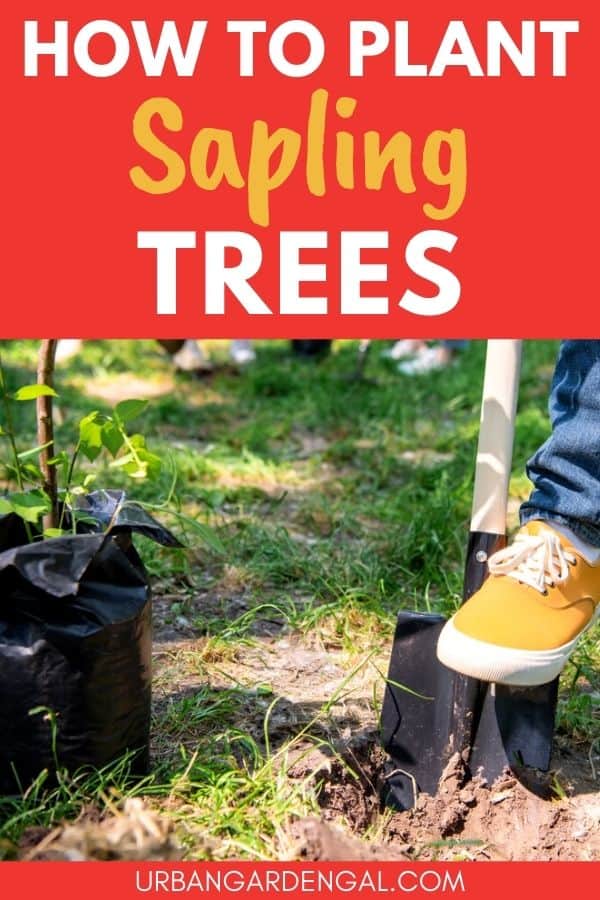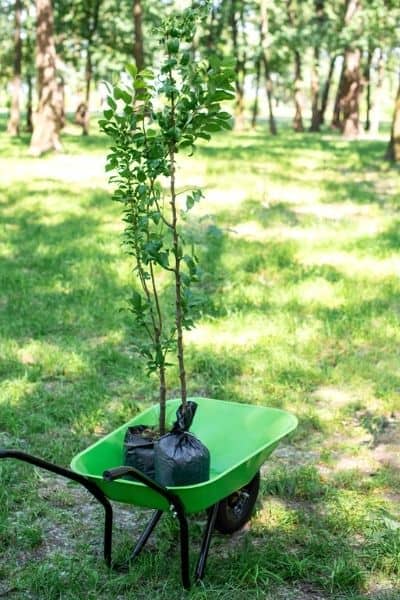Tree saplings are young trees that are approximately 3 to 4 feet (90 to 120 cm) tall, with a flexible trunk.
They’re often sold bare rooted or in containers and their small size makes them easy to transport and plant in the garden.
In this article I’ll share my tips for selecting, planting and caring for sapling trees.
This post contains affiliate links. Please read the disclosure for more info.
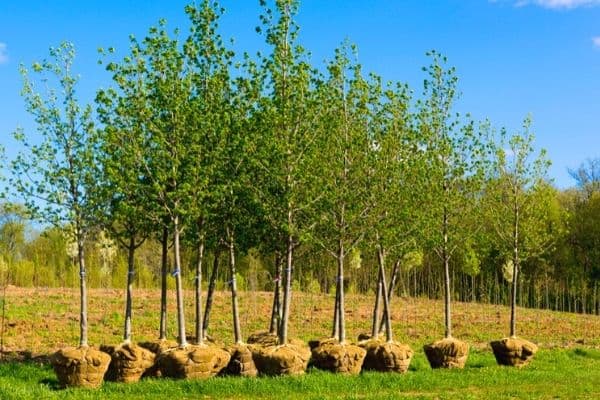
What is a sapling tree?
A sapling is a small, immature tree that is between 3 to 10 feet (90 cm to 3 metres) tall.
After the seed germinates it becomes a seedling before growing into a sapling, or young tree.
Sapling trees have flexible, smooth trunks and they generally don’t produce flowers or fruit.
How long does the sapling stage last?
Depending on the species of tree, a sapling can be between 3 and 15 years old.
Fast growing trees like cypress, redwood and birch have a short sapling stage, while slower growing trees like oaks, that take longer to mature will have a longer sapling stage.
Advantages of tree saplings
- Saplings are compact, which makes them easy to transport and plant.
- They’re less vulnerable to pests and diseases than seedlings.
- Sapling trees have flexible trunks which means you can train them to grow into the shape you like or even espalier (train them along a wire) to save space in the garden.
- Their flexible stem also helps them to withstand high winds.
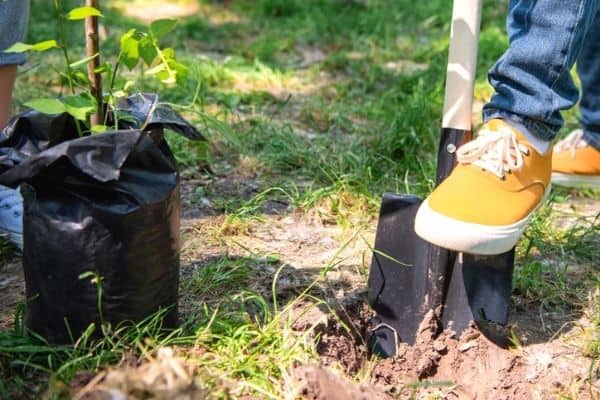
Planting sapling trees
Spring is the best time to plant a new tree sapling in the garden.
Before you purchase a sapling, consider the space you have available and choose a tree that will comfortably fit that space when it reaches maturity.
Make sure that there aren’t any power lines, pipes or concrete nearby that could be damaged by the tree’s roots.
Bare rooted saplings should be soaked in a bucket of water for a few hours before planting.
Dig a hole that is at least twice the width of the root ball.
Check the roots and cut off any damaged roots. Tease out the remaining roots so that they don’t grow in a spiral.
Place the sapling in the hole, backfill with soil and gently firm the soil down with your hands.
Add a thick layer of mulch around the base of the sapling to help with moisture retention and reduce weeds.
Regular watering will be required for a year or two after planting until the root system becomes established.
Give the sapling a good soak every week to help the roots grow deeply.
Depending on the wildlife in your area, you may need to protect the sapling with a plastic tube around the tree or use some posts and wire to keep any animals away.
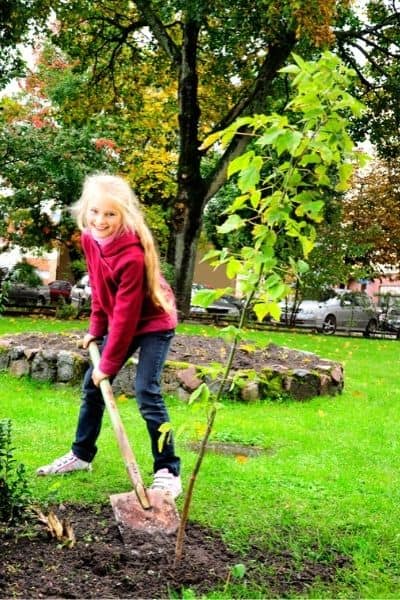
Common questions
Can a broken sapling be saved?
If a branch snaps off the sapling and you find it quickly you can try to reattach it by splicing it back onto the tree.
If the stem or branch is still partly attached you can repair it by making a splint from a piece of dowel or a pencil.
Use plant tape or nylon pantyhose to secure the splint and hold the broken stem together.
Do sapling trees need to be pruned?
Newly planted saplings need time to settle into their new spot in the garden so pruning should be limited to removing diseased or broken branches.
It’s best to wait until the tree has been in the garden for at least two years before you begin pruning it.
Where can I buy a tree sapling?
Saplings can be purchased from plant nurseries, garden centers, some farmer’s markets and online.
RELATED ARTICLES
So there are my tips for selecting, planting and caring for sapling trees.
With the right care your sapling will grow into a beautiful tree that you can admire for many years to come.
Have you grown a sapling tree in your garden? Let me know in the comments below.
Are you on Pinterest? I have boards dedicated to Urban Gardening and Gardening Tips that you may enjoy. You can also find me on Facebook.
